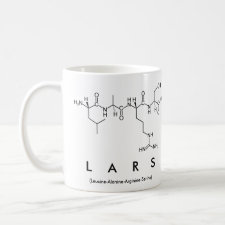
Authors: Spégel P, Schweitz L, Andersson LI, Nilsson S
Article Title: Novel Vinylpyridine Based Cationic MIP Monoliths for Enantiomer Separation in CEC.
Publication date: 2009
Journal: Chromatographia
Volume: 69
Issue: (3)
Page numbers: 277-285.
DOI: 10.1365/s10337-008-0911-0
Abstract: Abstract: Cationic vinylpyridine based molecularly imprinted polymer monoliths were, for the first time, applied to enantiomer separation using capillary electrochromatography. In order to map the synthesis conditions under which superporous monoliths are obtained, capillary columns were prepared by an in situ polymerization technique using varying monomer and porogen compositions. Both electrolyte pH and percentage of the organic modifier acetonitrile were found to affect the electrochromatographic behaviour on such columns. An interesting observation is that the electroosmotic flow changed direction from cathodic at high pH to anodic at low pH of the electrolyte, opening up the opportunity to manipulate the flow. This is attributed to the vinylpyridine based MIP becomes protonated and positively charged at low pH, whereas it is uncharged at high pH where instead negatively charged silanol groups drive the electroosmotic flow. Improved enantiomer resolution, as well as increased retention, was observed when the concentration of acetonitrile in the electrolyte decreased, indicating a significant element of hydrophobic effects in the molecular recognition of the imprinted enantiomer. Enantiomer separation of the non-steroidal anti-inflammatory drug ibuprofen was studied and efficiencies as high as 30,000 plates per meter with an asymmetry factor below 4 were obtained for the last eluting imprinted enantiomer. These values are better than that obtained generally using MIP based chromatography
Template and target information: non-steroidal anti-inflammatory drug, ibuprofen
Author keywords: capillary electrochromatography, molecularly imprinted polymer, monolith, vinylpyridine, ibuprofen



Join the Society for Molecular Imprinting

New items RSS feed
Sign-up for e-mail updates:
Choose between receiving an occasional newsletter or more frequent e-mail alerts.
Click here to go to the sign-up page.
Is your name elemental or peptidic? Enter your name and find out by clicking either of the buttons below!
Other products you may like:
 MIPdatabase
MIPdatabase









